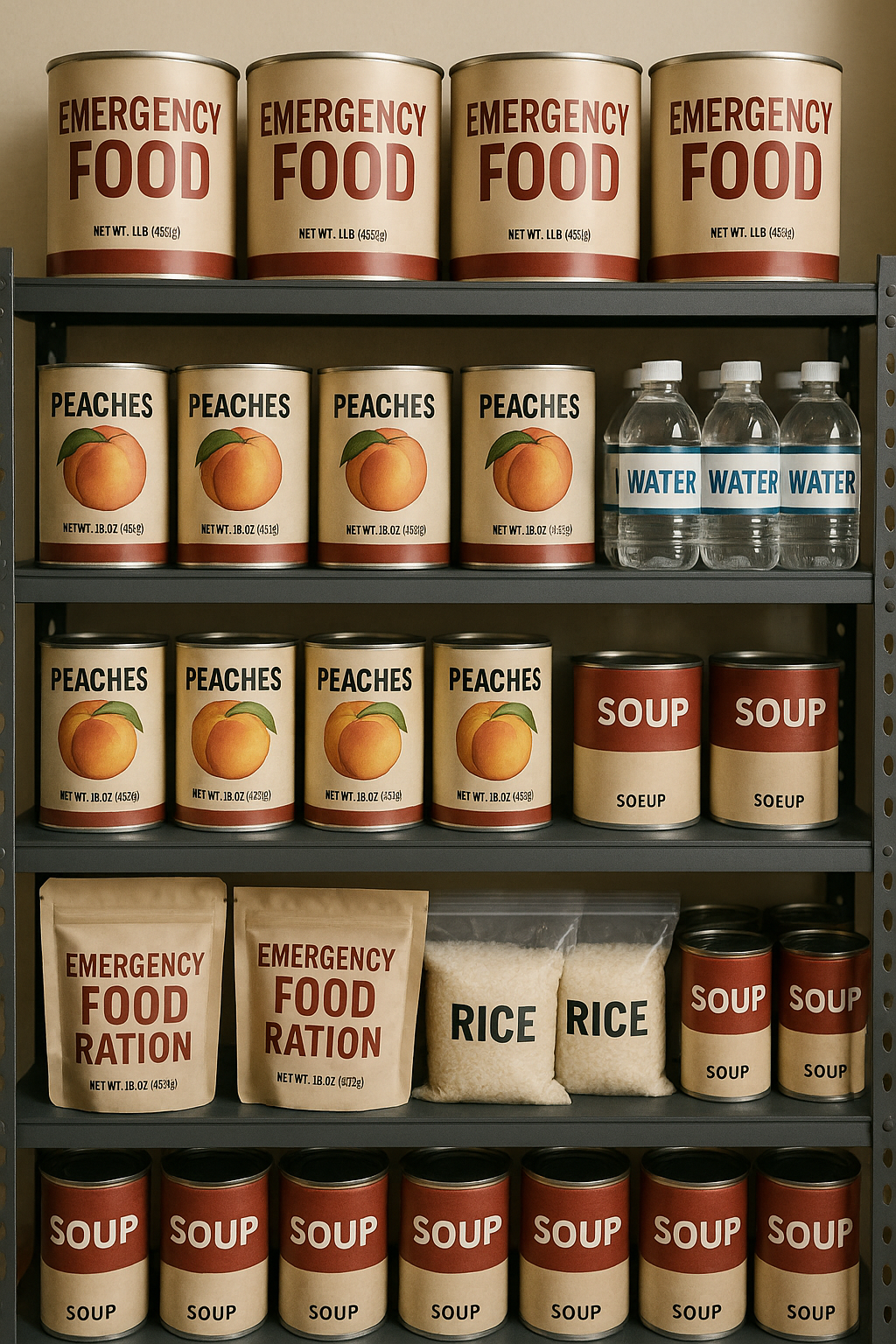Emergency Food Storage: Best Long-Term Foods to Stockpile
 Emergency food storage is one of the smartest steps you can take to protect your family during disasters, power outages, or supply chain disruptions. Having a reliable stockpile of shelf-stable food ensures you stay nourished and calm even when the world around you is not.
Emergency food storage is one of the smartest steps you can take to protect your family during disasters, power outages, or supply chain disruptions. Having a reliable stockpile of shelf-stable food ensures you stay nourished and calm even when the world around you is not.
In this guide, we’ll break down the top foods to store for the long haul, how to store them properly, and why emergency food storage should be a top priority in any preparedness plan.
Why Emergency Food Storage Matters
Life can change in an instant—natural disasters, economic collapse, pandemics, or civil unrest can disrupt food availability. Building a solid emergency food supply gives you peace of mind and increases your family’s resilience.
How Much Food Should You Store?
A good starting point is a 72-hour emergency kit, followed by expanding to a 30-day and eventually a 3- to 12-month food supply.
-
Short-Term (72 hours): Easy-to-prepare meals, MREs, canned goods
-
Medium-Term (30–90 days): Shelf-stable staples, freeze-dried meals
-
Long-Term (6–12+ months): Bulk grains, legumes, sealed dehydrated foods
Best Foods for Emergency Food Storage
Here are the top foods that are ideal for long-term storage due to their extended shelf life, nutritional value, and versatility.
Grains and Staples (Last 10–30+ Years)
-
White rice – Up to 30 years when stored properly
-
Rolled oats – Shelf life of 20+ years in Mylar bags
-
Pasta – Lasts up to 25 years sealed
-
Hard wheat berries – Excellent for grinding into flour
Canned and Jarred Foods (5–10 Years)
-
Canned vegetables and beans – Retain nutrients and ready to eat
-
Canned meats (chicken, tuna, beef) – High in protein and shelf-stable
-
Nut butters – Protein-rich and calorie-dense
-
Honey – Virtually indefinite shelf life
Freeze-Dried and Dehydrated Foods (Up to 25 Years)
-
Freeze-dried fruits and veggies – Retain most nutrients
-
Powdered eggs and milk – Essential for cooking and baking
-
Soup and stew mixes – Easy to prepare and hearty
How to Store Emergency Food Properly
Proper storage significantly extends shelf life and preserves nutritional value.
Key Storage Tips for Longevity
-
Use airtight containers – Mylar bags with oxygen absorbers are ideal
-
Store in a cool, dry, dark place – Aim for under 75°F and low humidity
-
Rotate stock – First in, first out (FIFO) keeps inventory fresh
-
Avoid plastic buckets alone – Always use food-grade liners
Emergency Food Storage Mistakes to Avoid
Common Pitfalls to Watch Out For
-
Storing food in garages or sheds – Too hot and humid
-
Relying only on canned goods – Limited shelf life and variety
-
Not diversifying your storage – Balance between carbs, protein, and fats
-
Ignoring water needs – Food is useless without clean water to prepare it
Building a Sustainable Emergency Food Supply
Don’t just stockpile food—build a sustainable emergency food storage system that evolves with your needs.
Step-by-Step Prepper Plan
-
Assess your household’s daily caloric needs
-
Start with a basic 72-hour kit
-
Add shelf-stable foods monthly
-
Learn to cook with stored foods
-
Repack bulk items into long-term containers
-
Track inventory and expiration dates
Conclusion: Stay Ready with Emergency Food Storage
Having a well-thought-out emergency food storage plan can make the difference between panic and peace during a crisis. Start small, stay consistent, and build a supply that supports your family through any emergency.
